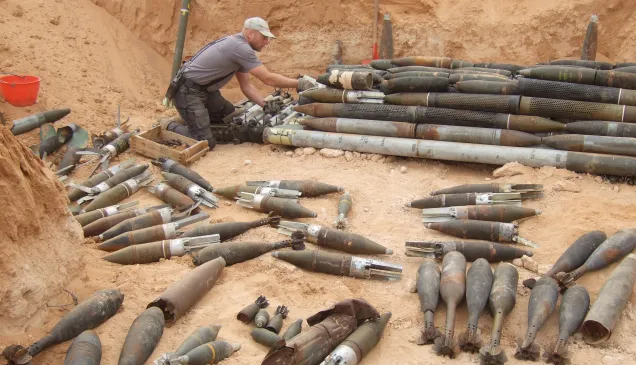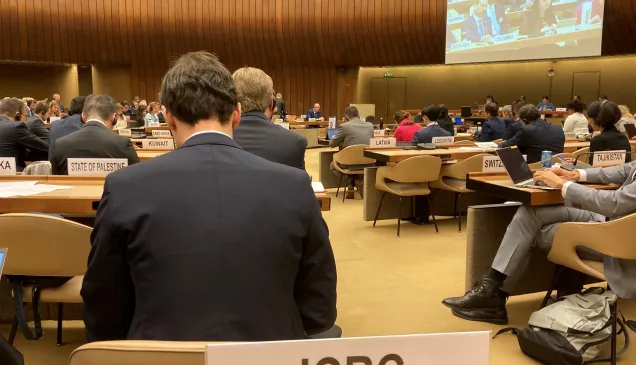Statement by Dr. Gilles Carbonnier, ICRC vice president renewing the political commitment to the Convention.
Excellencies, ladies and gentlemen,
Twenty years have passed since the Anti-Personnel Mine Ban Convention came into force. We are encouraged by the remarkable achievements of States Parties in mine clearance, stockpile destruction and victim assistance. Today, the ban on anti-personnel landmines is almost taken for granted.
Yet while the finishing line is already in sight, significant obstacles to reaching the goal of a world free of anti-personnel mines remain. States Parties must seize the opportunity of this Review Conference to address critical issues that risk undermining the effective implementation of the Convention and the protection it affords to civilians.
Three actions in particular need to be taken:
- First, States Parties must exercise due diligence in the implementation of the Convention's core obligations. Many States Parties have finished clearing their minefields or are very close to doing so. Yet every new mine victim, every field that cannot be ploughed, every road or path that cannot be followed is a forceful reminder of the urgency of completing mine clearance. It also underlines the vital need to protect civilians through enhanced mine risk education. We are unfortunately seeing a pattern of delay in meeting clearance deadlines, with a large number of extension requests over the years. Moreover, the completion of stockpile destruction by some States Parties is long overdue. We urge States Parties at this Review Conference to agree on measures and mechanisms to address outstanding implementation issues, in particular delayed clearance and stockpile destruction.
- Second, a mine free world is not a victim free world. The lifelong needs of mine victims, survivors and their families must be acknowledged. The ICRC's Physical Rehabilitation Programme, which celebrates its 40th anniversary this year, has supported nearly 2 million people with disabilities, including mine survivors, in more than 50 countries around the world. Far too often, they have struggled to access services and to be fully included in their societies. States Parties, in particular those with significant numbers of mine survivors, must redouble their efforts to eliminate such obstacles and to secure full, equal and effective participation in society for all mine survivors and others with disabilities.
- Third, the goal of eradicating anti-personnel mines can only be met with high-level political will, supported by sufficient human, technical and financial resources. States must continue to ensure that sustained, possibly increased, support is available to achieve substantive progress in mine clearance and to fulfil promises to mine victims, survivors and their families. In addition to traditional humanitarian assistance, innovative ways of mobilizing resources may need to be explored in order to tackle long-term challenges. For example, in 2017, the ICRC launched the first Humanitarian Impact Bond, raising 25 million USD from private investors for the construction of 3 physical rehabilitation centres in Mali, Nigeria and DRC. This allowed us to raise funds for these activities outside of our traditional framework, so that we can serve more people.
Excellencies, ladies and gentlemen,
The success of this Convention has proven that a global humanitarian problem requires a global solution – in this case achieved through a remarkable partnership between States, international organizations, the International Red Cross and Red Crescent Movement and the International Campaign to Ban Landmines. Let us continue to work together to cross the finishing line and achieve a mine-free and victim-free world!
Thank you.



